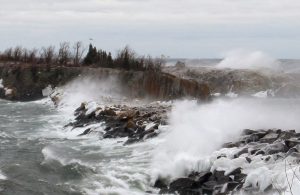
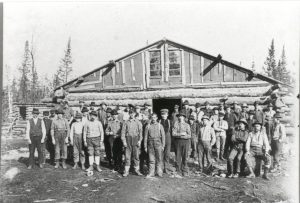 The port city of my birth, Superior, Wisconsin was founded on November 6, 1854 and incorporated March 25 1889. The city’s slogan soon became, “Where Sail Meets Rail,” because it was port connection between the shipping industry and the railroad. Much of Superior’s history parallels its sister city of Duluth’s, but Superior has been around longer than Duluth, which is also known as the Zenith City. Of course, the area had people there before that…there were Ojibwe Indians, and French traders that are known to be in the area in the early 1600s.
The port city of my birth, Superior, Wisconsin was founded on November 6, 1854 and incorporated March 25 1889. The city’s slogan soon became, “Where Sail Meets Rail,” because it was port connection between the shipping industry and the railroad. Much of Superior’s history parallels its sister city of Duluth’s, but Superior has been around longer than Duluth, which is also known as the Zenith City. Of course, the area had people there before that…there were Ojibwe Indians, and French traders that are known to be in the area in the early 1600s.
After the Ojibwe settled in the area and set up an encampment on present-day Madeline Island, the French started arriving. In 1618 voyageur Etienne Brulé paddled along Lake Superior’s south shore where he encountered the Ojibwe tribe, but he also found copper specimens. Brulé went back to Quebec with the copper samples, and a glowing report of the region. French traders and missionaries began settling the area a short time later, and a Lake Superior tributary was named for Brulé. Father Claude Jean Allouez, was one of those missionaries. His is often credited with the development of an early map of the region. Superior’s Allouez neighborhood takes its name from the Catholic missionary. The area was developed quickly after that, and by 1700 the area was crawling with French traders. The French traders developed a good working relationship with the Ojibwe people.
The Ojibwe continued to get along well with the French, but not so much the British, who ruled the area after 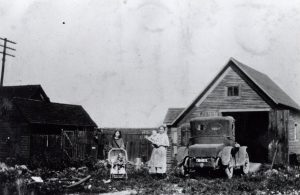
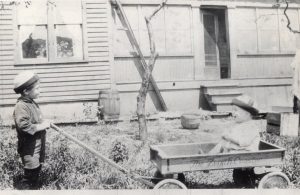 the French, but that ended with the America Revolution and the Treaty of Peace in 1783. The British weren’t as good to the Ojibwe as the French had been. Treaties with the Ojibwe would give more territory to settlers of European descent, and by 1847 the United States had taken control of all lands along Lake Superior’s south shore.
the French, but that ended with the America Revolution and the Treaty of Peace in 1783. The British weren’t as good to the Ojibwe as the French had been. Treaties with the Ojibwe would give more territory to settlers of European descent, and by 1847 the United States had taken control of all lands along Lake Superior’s south shore.
In 1854 the first copper claims were staked at the mouth of the Nemadji River…some say it was actually 1853. The Village of Superior became the county seat of the newly formed Douglas County that same year. The village grew quickly and within two years, about 2,500 people called Superior home. Unfortunately, with the financial panic of 1857, the town’s population stagnated through the end of the Civil War. The building of the Duluth Ship Canal in 1871, which was followed by the Panic of 1873. pretty much crushed Superior’s economic future. Things began to look up when in 1885, Robert Belknap and General John Henry Hammond’s Land and River Improvement Company established West Superior. Immediately they began building elevators, docks, and industrial railroads. In 1890, Superior City and West Superior merged, The city’s population fluctuated, as a boom town will, between 1887 and 1893, and then another financial panic halted progress. Over the years since then, Superior’s population has had it’s ups and down, as has it’s sister city, Duluth, but it has remained about one fourth the size of its twin across the bay.
My great grandparents, Carl and Albertine Schumacher lived in the Goodhue, Minnesota area, when my grandmother Anna was born, but my grandparents Allen and Anna Spencer lived in Superior. That is where my 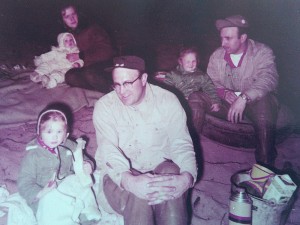
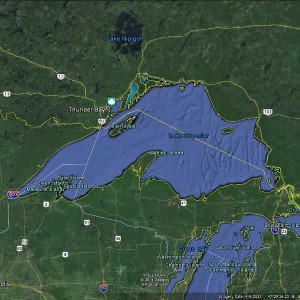 dad, Allen Spencer was born, as were my sister, Cheryl and I. We didn’t live in Superior for all of our lives, just 3 and 5 years, but the area remains in our blood, and in our hearts. It could be partly because of all the trips our family made back to Superior, but I don’t think that’s totally it, because there is just something about knowing that you came from a place, that will always make it special. Superior, Wisconsin is a very special place, that will always be a part of me and my sister, Cheryl too.
dad, Allen Spencer was born, as were my sister, Cheryl and I. We didn’t live in Superior for all of our lives, just 3 and 5 years, but the area remains in our blood, and in our hearts. It could be partly because of all the trips our family made back to Superior, but I don’t think that’s totally it, because there is just something about knowing that you came from a place, that will always make it special. Superior, Wisconsin is a very special place, that will always be a part of me and my sister, Cheryl too.


Leave a Reply